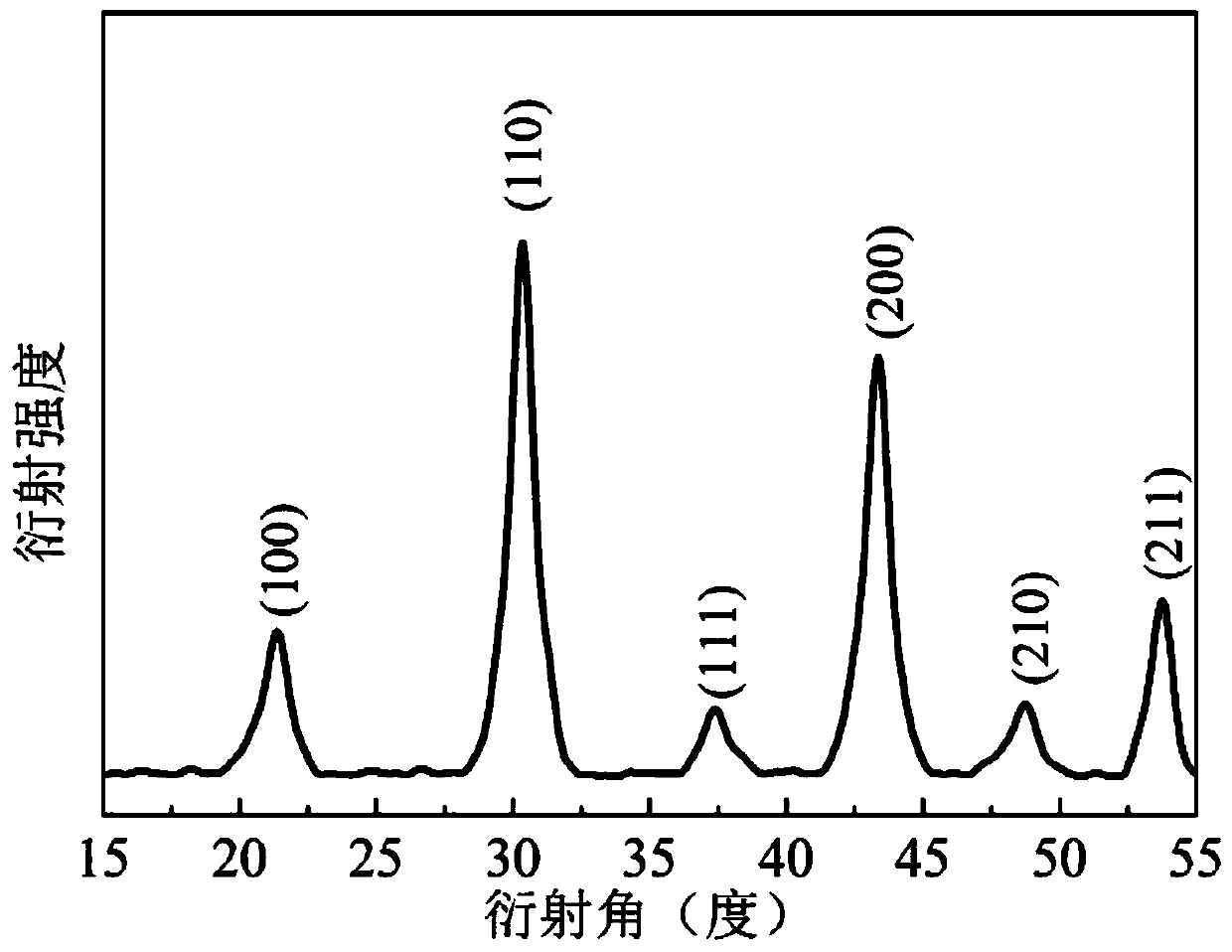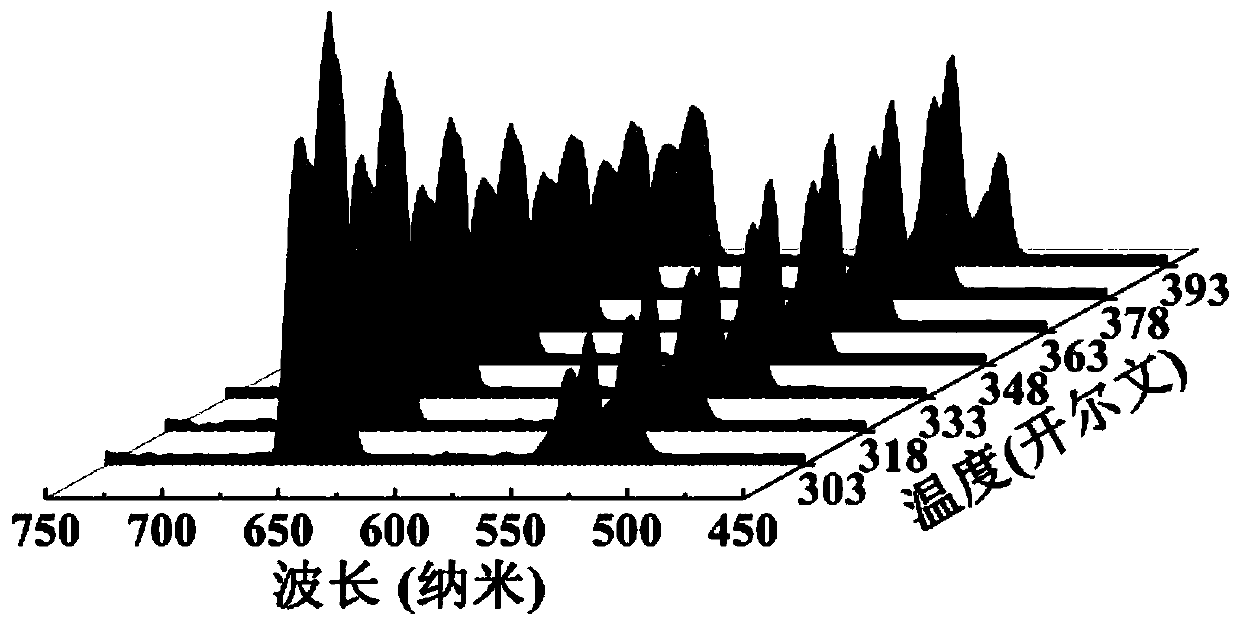An ultrahigh-sensitivity up-conversion nanometer temperature probe and its preparation method
A temperature probe and sensitivity technology, applied in the field of rare earth doped up-conversion luminescent nanomaterials and temperature detection, can solve the problem of differential signal discrimination, high absolute temperature sensitivity and high relative temperature sensitivity, low temperature measurement technology is difficult Issues such as relative temperature sensitivity
- Summary
- Abstract
- Description
- Claims
- Application Information
AI Technical Summary
Problems solved by technology
Method used
Image
Examples
example 1
[0017] Example 1: Up-conversion nanometer temperature probe material KMn 0.8 Yb 0.19 Er 0.01 f 3 preparation of
[0018] 0.80 mmol of Mn(AC) 2 4H 2 O, 0.19 mmol YbCl 3 ·6H 2 O and 0.01 mmol ErCl 3 ·6H 2 O was added to a 100mL three-necked flask, 6mL of oleic acid and 12mL of octadecene were added, and stirred to make them evenly mixed. Under the protection of nitrogen flow, the above mixture was heated to 150° C. and kept at this temperature for 30 minutes to completely dissolve the metal salt to form a clear and transparent light yellow solution. Then cooled to room temperature, 4.0 mmol NH 4 F and 10 ml of methanol solution of 2.0 mmol potassium hydroxide were added dropwise to the above solution, stirred and allowed to react at room temperature for 30 minutes. The mixed solution was heated to 50° C. and kept for 30 minutes to remove methanol in the reaction system. After methanol was removed, under the protection of nitrogen flow, the reaction system was heated ...
example 2
[0019] Example 2: Up-conversion nanometer temperature probe material KMn 0.8 Yb 0.19 Er 0.01 f 3 Applications
[0020] Irradiate KMn with near-infrared light with a wavelength of 980nm 0.8 Yb 0.19 Er 0.01 f 3 Nanomaterial; measure the emission intensity of its main peak at 522nm, 542nm green light emission band and 654nm red light emission band with a spectrometer; calculate the intensity ratio value; then in Figure 6 By comparing the given linear diagrams, the temperature of the environment where the material is located can be calibrated. The temperature detection range is 30°C to 120°C, and the absolute temperature is 303K to 498K.
PUM
| Property | Measurement | Unit |
|---|---|---|
| particle diameter | aaaaa | aaaaa |
Abstract
Description
Claims
Application Information
 Login to View More
Login to View More - R&D
- Intellectual Property
- Life Sciences
- Materials
- Tech Scout
- Unparalleled Data Quality
- Higher Quality Content
- 60% Fewer Hallucinations
Browse by: Latest US Patents, China's latest patents, Technical Efficacy Thesaurus, Application Domain, Technology Topic, Popular Technical Reports.
© 2025 PatSnap. All rights reserved.Legal|Privacy policy|Modern Slavery Act Transparency Statement|Sitemap|About US| Contact US: help@patsnap.com



